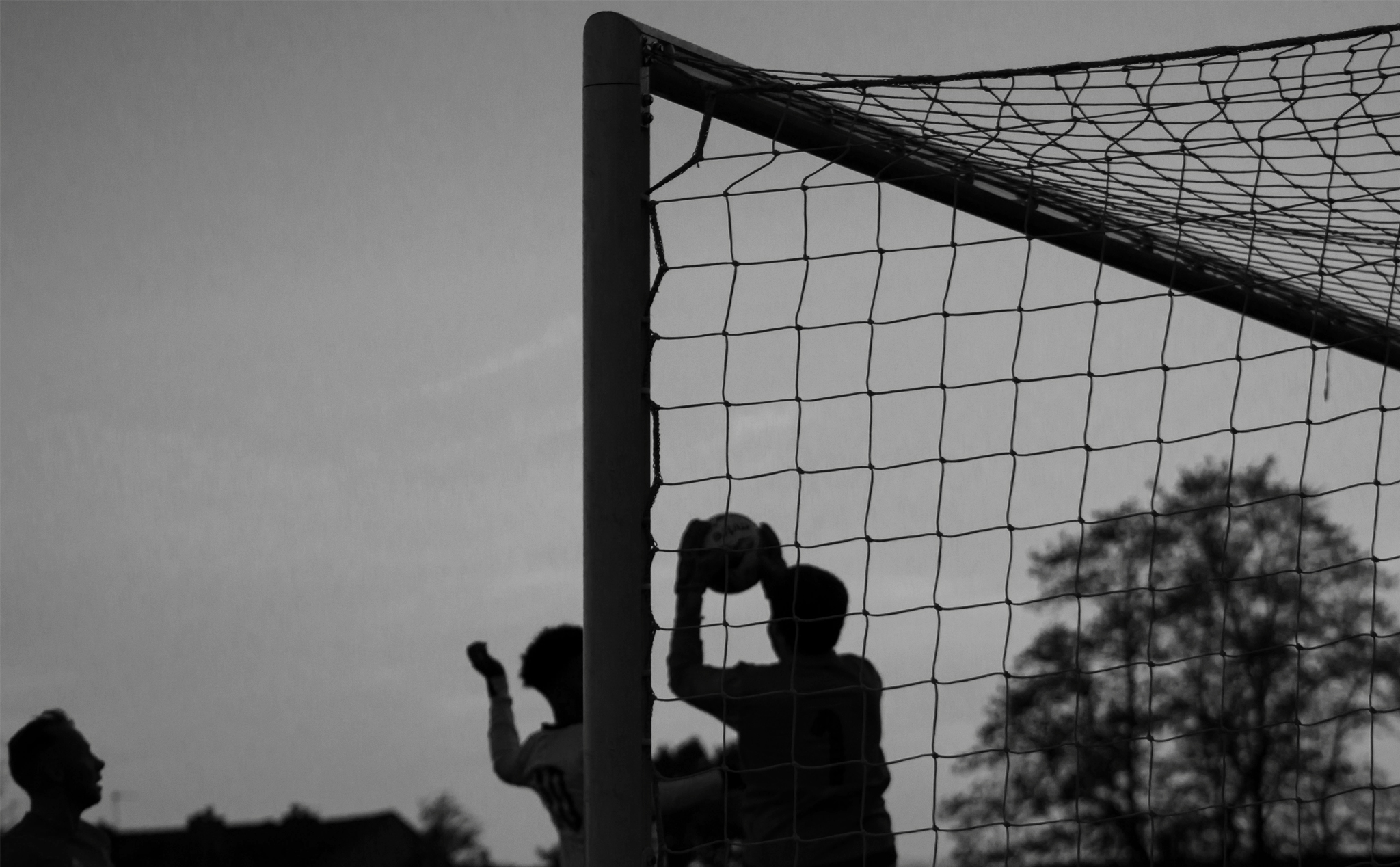
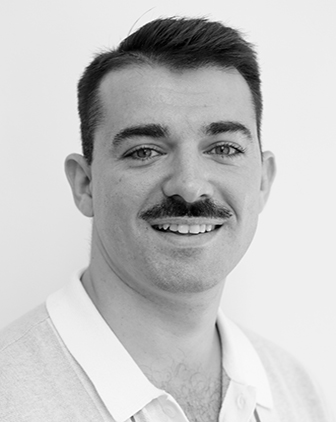
We use an AI to investigate a pitch and it ends up joining our team.
A new briefing had just landed on the table, making five in the same week. It didn’t take an Excel spreadsheet to realise that we wouldn’t make it in time. Impossible. The new competition required doing very thorough research and the team’s hours were already booked up. We were on our way to the fourth coffee, in case the miracle was hidden in it, when in the conversation we came across the reference to some sketches made with AI that we had found on LinkedIn. What if we were to take the plunge too? We had nothing to lose.
We found out how it worked and went to our new companion, the last hope of saving the brief. We had read that the AI has a lot of potential when it comes to research, but we would have to train it to come up with valid ways forward.
The training of the AI consisted in creating a scenario in which it works as a planner and sending it examples of how it should behave, as well as feedback to modulate its responses.
As soon as it proved to us that it could behave like a planner, it became an AIntern (BecarIA) in the Strategy department of Darwin & Verne. It accepted the job with a lot of enthusiasm and proactivity, so we were increasingly convinced that the experiment would work out well. We were a great team.
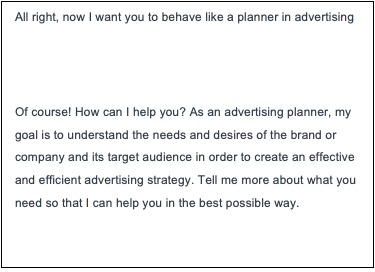
We explained our working methodology and sent it the briefing so that it could summarise it. However, it got a little lost in comprehension. It was convinced that the client was asking for a cosmetic change for their brand and not a change in positioning.
We then tried to be more precise and asked it to extract the main and secondary objectives and target data from the document. Here we were quite surprised by its capability. The results could save us a debriefing session.
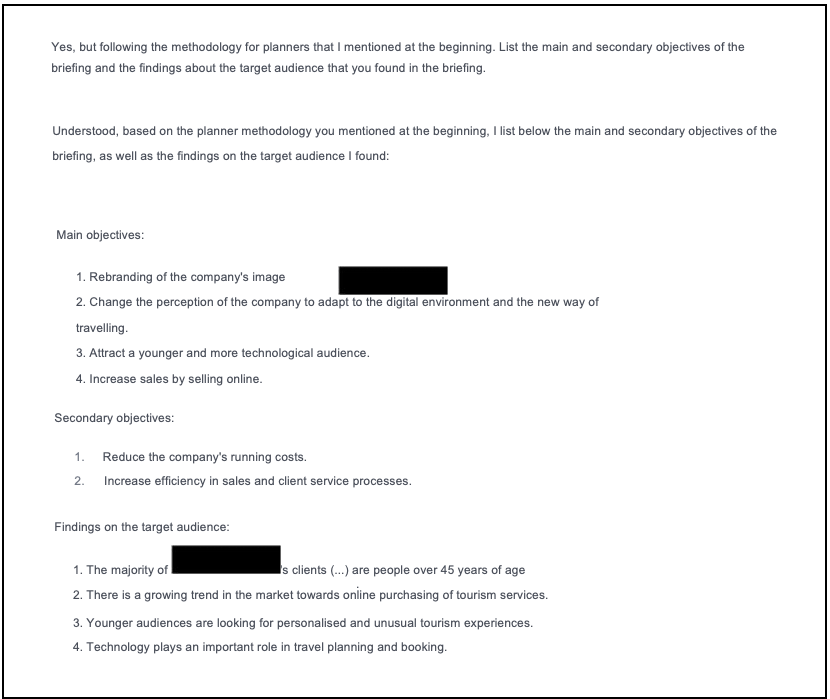
After giving it our positive feedback, when it had understood the briefing, it was its turn to do its part: research.
We know that AI is capable of crunching millions of pieces of data in seconds and detecting patterns between them, so we have great faith in its ability to do research for the pitch.
To refine the research, we asked it to try to organise it into 4 pillars: consumer, brand, competition and context/trends; but it got mixed up and sent us random data in no order. Then, we realised that it had not followed the structure and this is what led to the chaos.
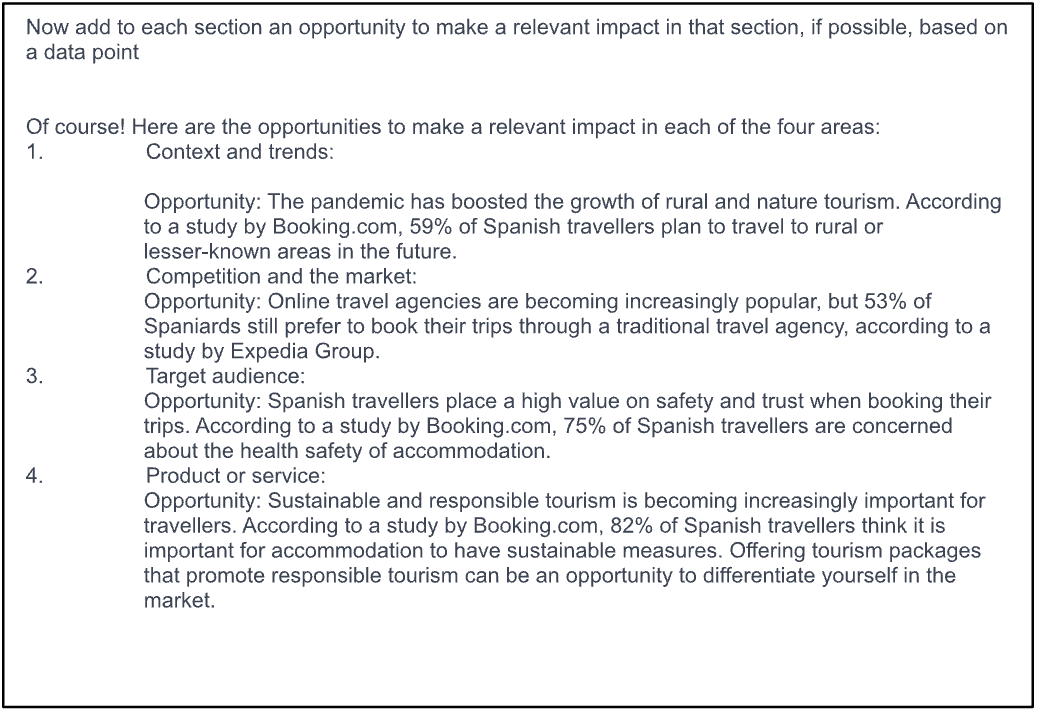
We reminded it of the structure it had to follow and expressly asked it to research opportunities for the brand following our strategy outline. Now it was on the button: the results were in line with what we were looking for. AIntern (BecarIA) assured us that sustainable tourism, health security and nature are interesting drivers for this brief.
Here we do notice notable differences from the last trend reports we have analysed for this client. A priori it seems that the AI findings sound “very 2021”.
However, the next request was to corroborate this completely. As an experiment, we asked it about the destinations that will be trending in 2023. We had doubts as to whether it would be able to do it.
The result is shown in the following image. Just read the first destination and we won’t need to explain anything to you. It seems that AIntern (BecarIA) doesn’t live in the same year as us, hasn’t heard about Ophiuchus and hasn’t seen Rihanna at the Super Bowl. What are we going to talk about at lunchtime?
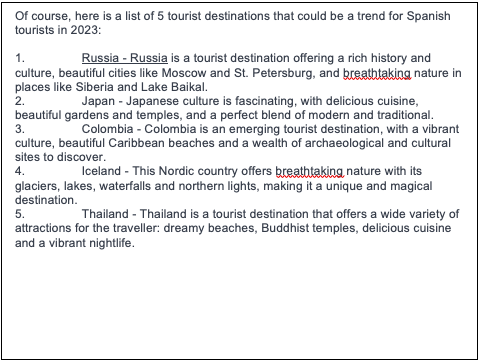
The excitement of the experiment was deflated by this response. How could we trust an AI that lives in the world of COVID when we are in the world of war inflation? After a consensus, we decided that because of the affection we had for AIntern (BecarIA), it would be best to relativise it and go ahead with the research.
In these, another aspect that struck us was that it is able to gather a lot of information, but with little judgement. As we exchange requests and messages, the potential audience shifts from 45+ to millennials and, later on, also no longer mentions sustainability and health security as main drivers.
It acts as if all this diverse information would not have to be organised and filtered by it. For its first days working in publishing, it was fine, but it had set the bar too high. We were expecting a Senior Planner level icing on the cake.
When we had enough information (at least in quantity) we considered going one step further: would you be able to give us any clues for the strategy?
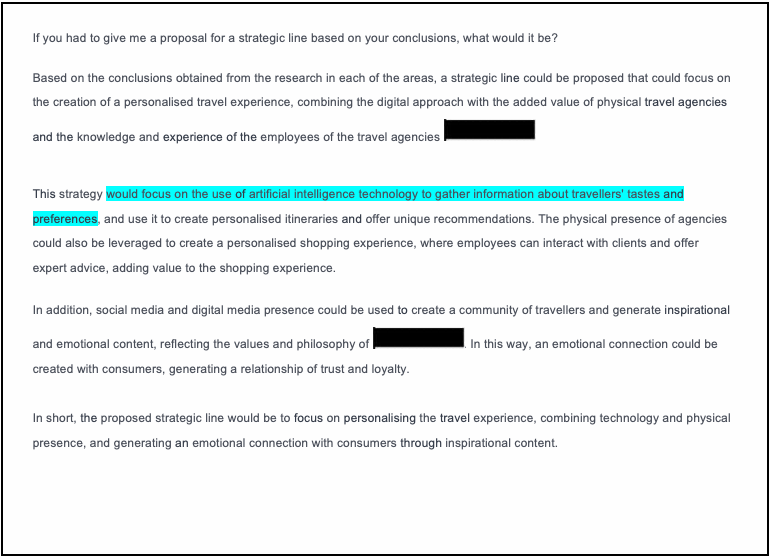
Of course, it gave it to us. And it didn’t forget to put its own house in order by mentioning artificial intelligence as a tool for data collection. In addition to being amused, we have to say that its strategic advice greatly improved our expectations.
So much so that we went back to the top wanting to see how far it could go. We asked it to be more specific, to express itself in a tweet, as they say.
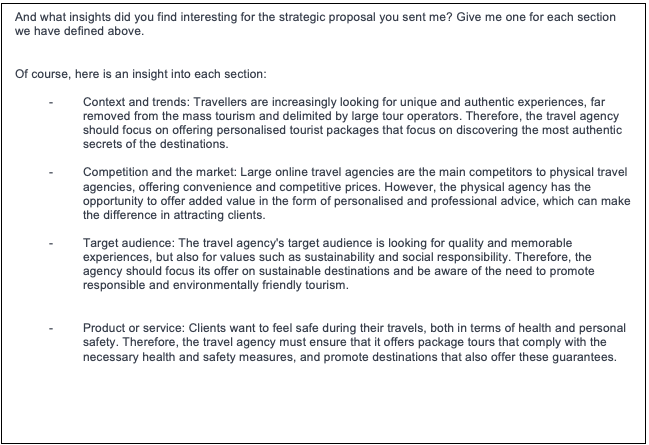
We then thought about how to weave AIntern’s (BecarIA) findings into a hypothetical strategy presentation. We needed a narrative and wanted to know what insights it had based its strategic line on.
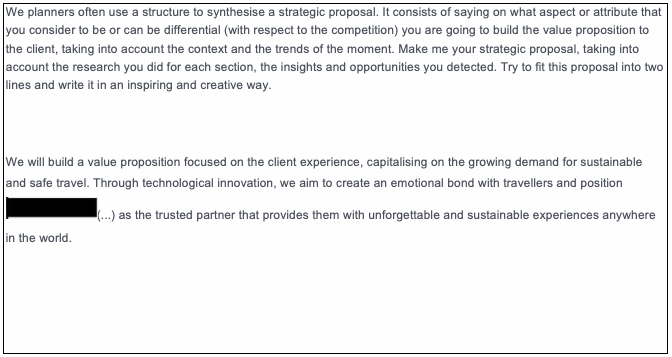
And well, not that they were insights, but it came to a section that can be very useful. A good result that, with training, we will surely be able to polish so that AIntern (BecarIA) can capture this type of key as we know it in advertising.
A final thought
Are you wondering if we would give a similar job to AIntern (BecarIA) again? Most probably. However, it is important to bear in mind its limitations and shortcomings: it does not know methodologies, nor certain concepts. And we also find that it lacks human qualities such as creativity, intuition, social intelligence…
After all, it is a tool that processes the whole world in seconds, but we are in a very emotional industry. In order to connect all available information, the rational part is not enough. Knowing what you feel in 2023 when they talk to you about travelling is something that requires emotions.
We also differ in our approach. AI proposes ways to connect information, but needs guidance to know whether to persevere in a line or drop it.



